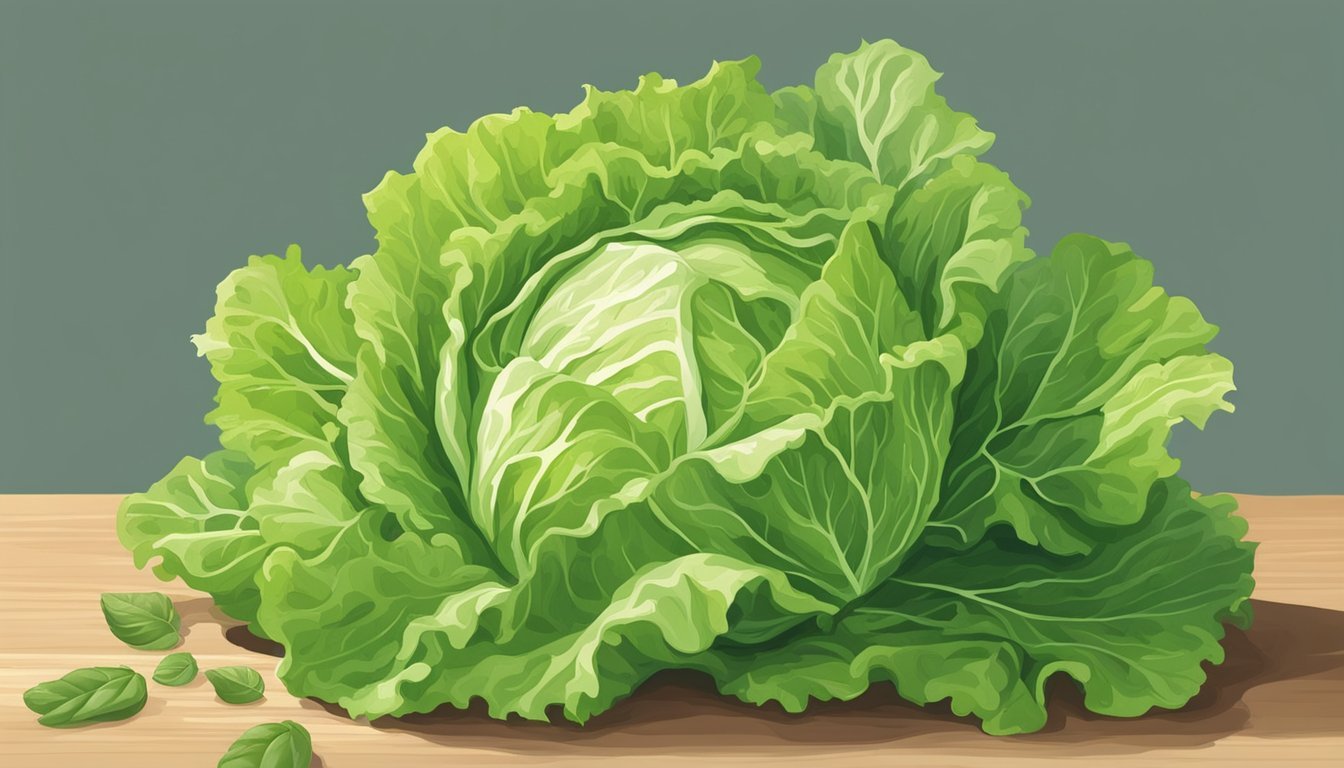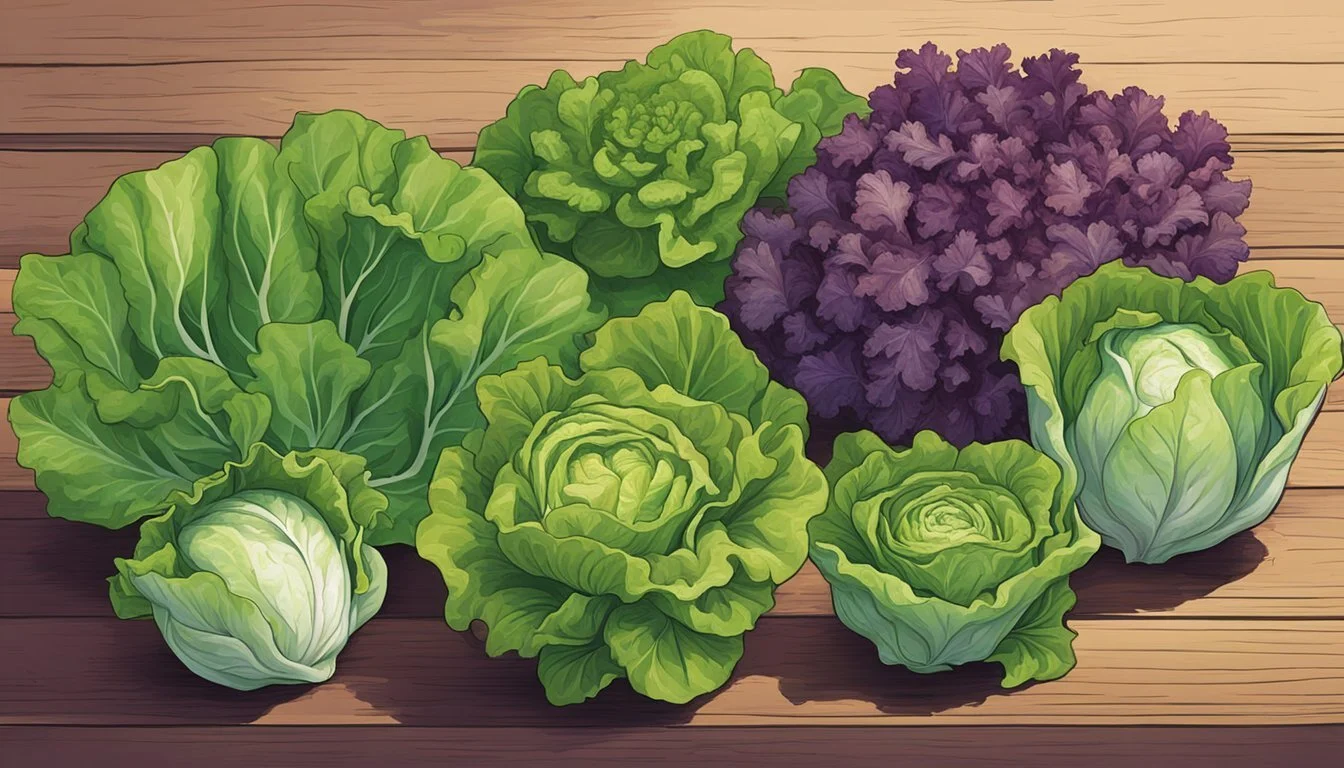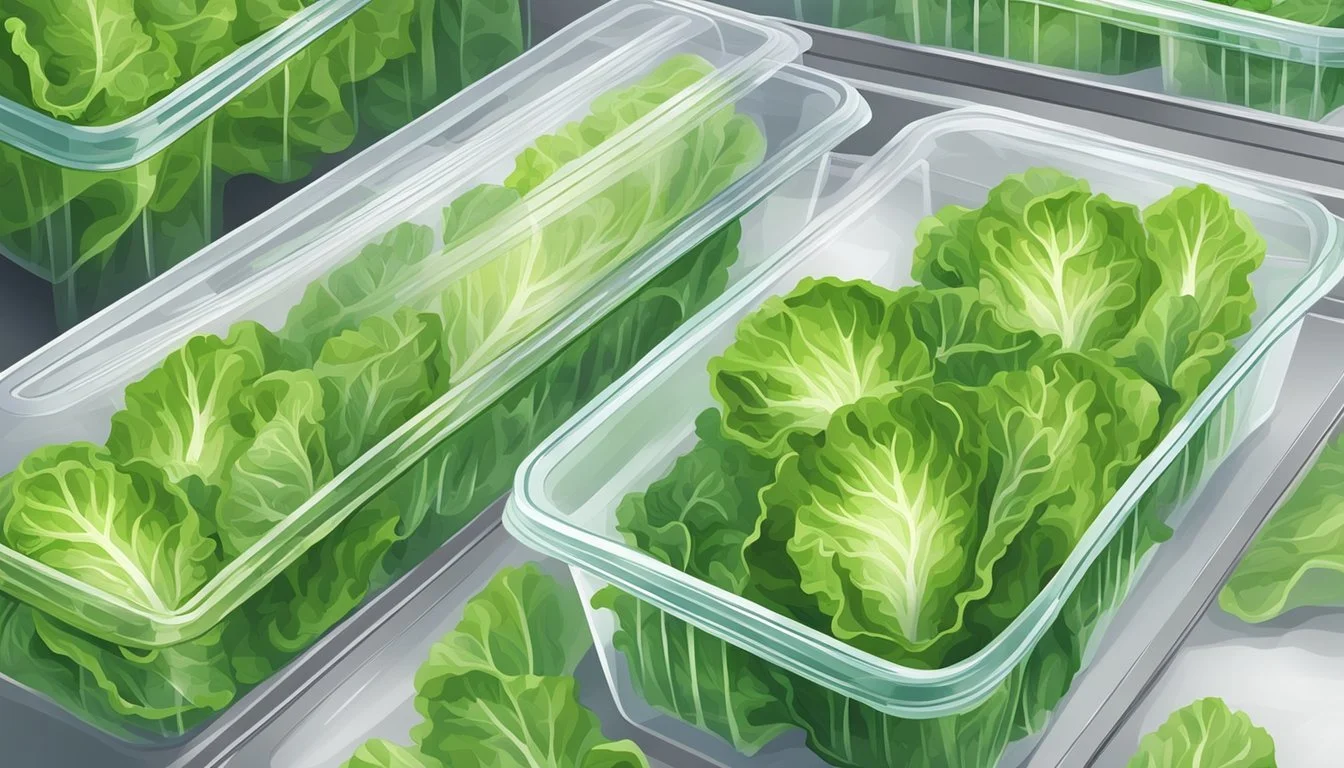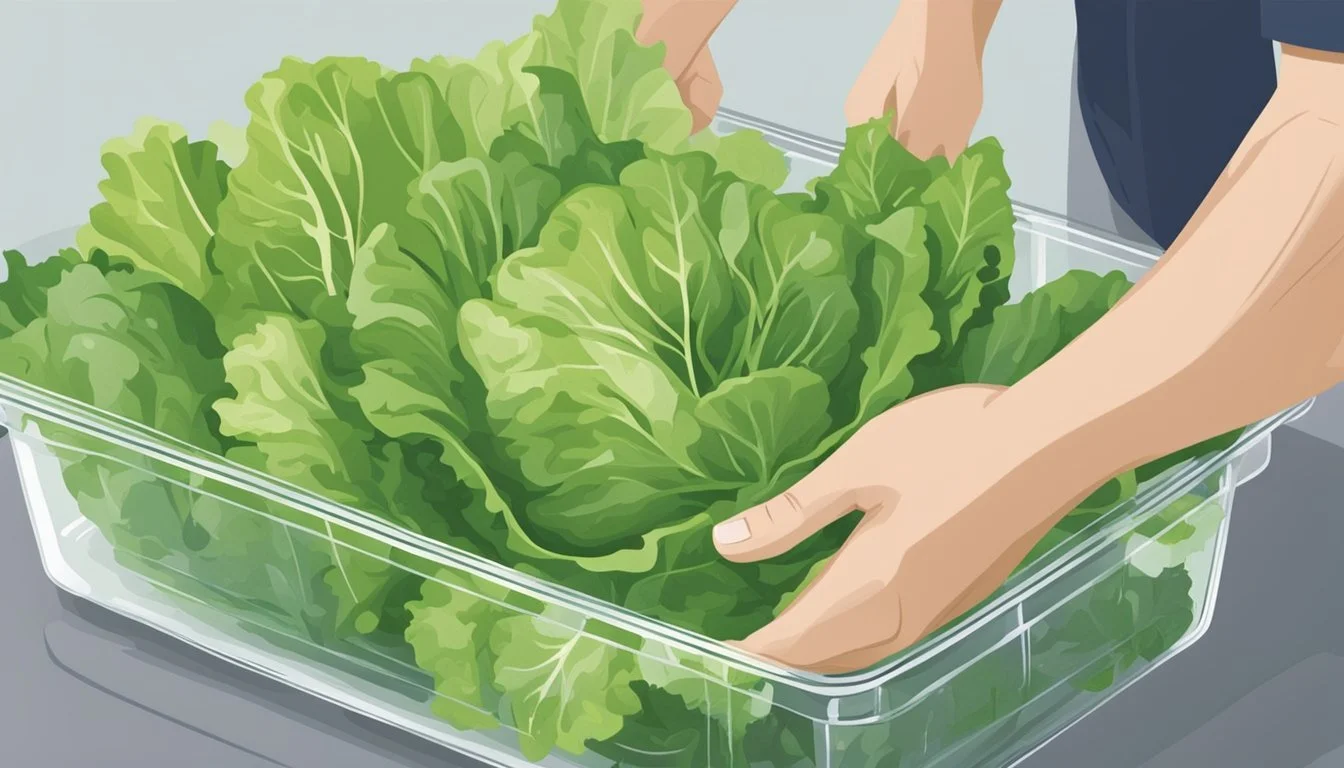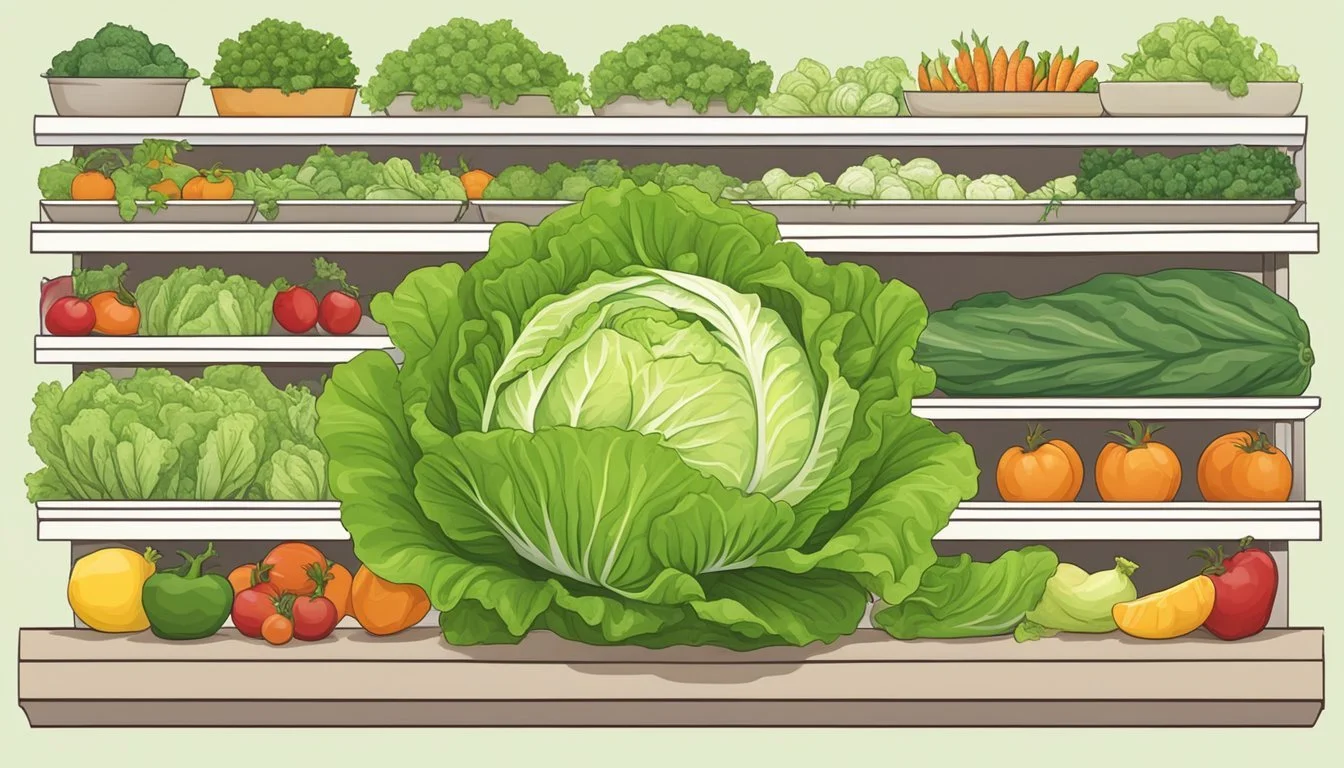Does Lettuce Go Bad?
Shelf Life, Storage Tips, and Signs of Spoilage
Lettuce, a staple in many salads and dishes, undoubtedly has a shelf life, and yes, it can go bad. Head lettuce such as iceberg or romaine can last for 1 to 3 weeks, while loose leaf varieties like butterhead or green leaf lettuce keep for only 7 to 10 days when stored properly. Knowing how long your lettuce lasts can help you better plan meals and reduce waste.
Various signs indicate spoiled lettuce, including a rotten smell, mushy texture, and discolored or withered leaves. Storing lettuce in the fridge, well-wrapped but with some airflow, can extend its freshness. Avoid keeping it near ethylene-producing fruits like apples and tomatoes, as the gas accelerates spoilage.
Recognizing whether lettuce is still good to eat can save you from an unpleasant eating experience. Spoiled lettuce not only feels and smells off but often carries a sour taste that contrasts sharply with the crisp, watery flavor of fresh leaves. Understanding these spoilage indicators ensures you enjoy your meals safely and at their best quality.
Understanding Lettuce and Its Varieties
Lettuce is a common leafy green with several varieties, each having unique characteristics. Recognizing their features, knowing optimal storage conditions, and identifying freshness can help maintain quality and prevent spoilage.
Characteristics of Iceberg, Romaine, and Loose-Leaf Lettuce
Iceberg Lettuce: Known for its crisp texture and pale green leaves, iceberg lettuce forms tight, cabbage-like heads. Its mild flavor and high water content make it a popular choice for salads.
Romaine Lettuce: This variety has long, sturdy leaves with a robust, slightly bitter taste. The leaves are darker green, featuring a prominent rib running down the center, providing a crunchy texture.
Loose-Leaf Lettuce: Unlike iceberg and romaine, loose-leaf lettuce does not form heads. Instead, it consists of loose, floppy leaves that come in a range of colors from green to reddish-purple. Its flavor is often more delicate.
Optimal Conditions for Fresh Lettuce
Fresh lettuce thrives best when stored in cool, moist environments. Ideal fridge temperatures range between 32-36°F (0-2°C). Moisture Control: Excess moisture can lead to spoilage. Ensure the lettuce is dry before storing, using perforated plastic bags to allow airflow and prevent condensation.
Ethylene Sensitivity: Lettuce is sensitive to ethylene gas, which can accelerate spoilage. Keep it away from ethylene-producing fruits like apples and bananas. Refrigeration: Store lettuce in the crisper drawer where humidity levels are higher to keep it fresh.
Identifying Fresh vs. Spoiled Lettuce
Appearance: Fresh lettuce has vibrant, crisp leaves. Any sign of browning, wilting, or sliminess indicates spoilage. Texture: Fresh lettuce feels firm and resilient. Spoiled lettuce will feel soft, slimy, or mushy.
Smell: Fresh lettuce has a neutral, slightly earthy scent. Spoiled lettuce emits a foul, rotten odor. Taste: Fresh lettuce tastes clean and mildly sweet. If it has a sour or off taste, it's likely gone bad. Always inspect and smell lettuce before consuming to ensure it's fresh.
Factors Influencing Lettuce Spoilage
Lettuce spoilage is affected by several key factors, including moisture and humidity levels, exposure to ethylene gas, and the temperature and airflow in storage environments.
Role of Moisture and Humidity
Moisture plays a significant role in how quickly lettuce spoils. Excess moisture can lead to the growth of bacteria and mold. This is why it's important to keep lettuce as dry as possible after washing it.
High humidity levels can accelerate spoilage, causing the leaves to become mushy and slimy. Using a paper towel to absorb extra moisture in storage can help extend the freshness of lettuce. Proper packaging that minimizes trapped moisture is also crucial.
Impact of Ethylene Exposure
Lettuce is sensitive to ethylene, a gas produced by fruits like apples and bananas. Ethylene can speed up the ripening process, leading to faster spoilage of lettuce. It’s advisable to store lettuce away from ethylene-producing fruits to preserve its shelf life.
Ethylene detectors or absorbers in storage areas can help minimize the exposure and prolong the freshness. Understanding which fruits and vegetables produce ethylene can help in organizing storage more effectively.
Temperature and Airflow Considerations
Temperature control is critical for maintaining lettuce freshness. Storing lettuce at temperatures between 32°F and 36°F (0°C to 2°C) is ideal. Cold storage slows down the metabolic processes in lettuce, reducing spoilage.
Ensuring proper airflow around stored lettuce can also help, as stagnant air can lead to mold growth. Refrigerators with good air circulation are best. Avoid cramming lettuce into tight spaces to allow for adequate air movement.
Using these storage conditions effectively can significantly extend the shelf life of lettuce. Proper refrigeration and airflow management are essential components of preserving lettuce quality.
Signs of Lettuce Going Bad
Lettuce can go bad due to various factors. This section details the visual signs of spoilage, changes in texture, and odors that indicate lettuce has spoiled.
Visual Indicators: Discoloration and Brown Spots
Discoloration and brown spots are common signs of lettuce spoilage. Fresh lettuce is typically vibrant green. When lettuce begins to turn bad, the edges may start to yellow or brown. Brown spots can develop due to overexposure to air or moisture.
Inspect the entire leaf, including the tips. If you see significant discoloration, it's a strong indicator that the lettuce is no longer fresh. Discolored leaves are best discarded, as they are likely unsafe to eat.
Texture Changes: Wilting, Sliminess, and Firmness
The texture of lettuce changes as it spoils. Fresh lettuce leaves are crisp and firm. Wilting is often the first indicator of spoilage, where the leaves lose their rigidity and become limp.
Sliminess is another clear sign. Slimy lettuce feels wet and sticky to the touch, indicating bacterial growth. Firm, fresh leaves provide a satisfying crunch, whereas spoiled lettuce is soft and mushy.
Odor and Smell as Spoilage Sign
The smell of lettuce can tell you a lot about its freshness. Fresh lettuce has a mild, almost neutral scent. Spoiled lettuce emits a pungent, rotten smell which is very noticeable. This odor is due to the breakdown of organic material and bacterial growth.
If you detect any foul odors, it's best to discard the lettuce immediately. Relying on your sense of smell is a quick and effective way to judge the freshness of your lettuce.
Proper Storage Techniques
Proper storage of lettuce can significantly extend its shelf life by several days to weeks. Key factors include ideal refrigeration methods, managing moisture, and specific handling for both bagged and head lettuce.
Refrigeration and Container Choices
Lettuce should be stored in the refrigerator to maintain its freshness. For head lettuce, cut off the stem while keeping the head intact. It is advisable to wrap the lettuce in paper towels or a thin dish towel to absorb excess moisture.
Place the lettuce in an airtight container or crisper drawer in the refrigerator. For bagged lettuce, squeeze out any excess air from the original bag and fasten it with a clip before placing it in the fridge. Proper storage conditions help maintain the lettuce's texture and flavor.
Dealing with Excess Moisture
Moisture is a critical factor in keeping lettuce crisp. Excess moisture can lead to slimy lettuce. After washing lettuce, it's important to dry it thoroughly using a salad spinner or by patting it dry with paper towels.
For storage, wrapping lettuce in paper towels can absorb moisture and prevent spoilage. Ensure any containers or bags used for storage are dry before placing the lettuce inside. Keeping moisture levels controlled is essential for extending the shelf life of lettuce.
Best Practices for Bagged and Head Lettuce
Bagged lettuce is generally pre-washed and should not be washed again at home, as it can reduce its shelf life. If washing is necessary, make sure it is dried thoroughly before storage to avoid moisture build-up. Always store bagged lettuce in its original bag or an airtight container.
Head lettuce, once trimmed, should be wrapped in paper towels and stored in the refrigerator's crisper drawer. The crisper drawer should be set to a high humidity level and kept separate from ethylene-producing fruits like apples and bananas to prevent the lettuce from spoiling too quickly.
Using these specific storage techniques helps maintain lettuce's freshness and extends its usability.
Shelf Life of Lettuce
The shelf life of lettuce varies significantly based on the type and storage conditions. Head lettuce tends to last longer than loose leaf varieties, and proper storage can extend its freshness.
Estimating How Long Lettuce Lasts
Head lettuce like iceberg and romaine can last between 1 to 3 weeks. This duration depends on how fresh the lettuce was when purchased and how it is stored.
Loose leaf lettuce, including butterhead and green leaf, generally lasts 7 to 10 days. Individual lettuce leaves spoil faster than whole heads, typically within a week.
Shredded and bagged lettuce often lasts only 3 to 5 days or about a week after the "sell by" date on the package. Monitoring the condition of the leaves can help ensure they are consumed before they spoil.
Factors Affecting Lettuce Longevity
Storage is crucial for maintaining lettuce freshness. Lettuce should be kept in the refrigerator, ideally in the crisper drawer, which provides a more controlled environment.
Airflow and moisture play key roles. Lettuce should be well-wrapped to avoid excess moisture but should still allow some airflow to prevent wilting. It's important to dry the leaves before storage to extend their shelf life.
Proximity to ethylene-producing fruits and vegetables also affects shelf life. Lettuce should be stored away from apples, pears, avocados, and tomatoes, as they emit ethylene gas that can speed up spoilage.
By understanding these factors, one can maximize the freshness and usability of lettuce in their daily meals.
Consuming Lettuce Safely
Ensuring lettuce is safe to eat involves proper washing techniques, understanding when it's contaminated, and recognizing signs of spoilage to prevent foodborne illness.
Importance of Washing Lettuce
Washing lettuce is essential. Even if labeled as pre-washed or triple-washed, it's advisable to rinse it under running water. This removes any remaining dirt or pesticides.
For a more thorough clean, soaking lettuce in a vinegar and water solution for 10 minutes can help reduce bacteria. Always dry the leaves afterward, as excess moisture can speed up spoilage. Use a salad spinner or pat gently with a clean towel.
Preventing Foodborne Illness
Contamination from E. coli, Salmonella, and Listeria can cause foodborne illnesses. Symptoms include nausea, vomiting, diarrhea, abdominal pain, and fever.
To minimize risk, store lettuce away from raw meats and produce that emits ethylene gas, such as apples and tomatoes. Keep it refrigerated at temperatures below 40°F (4°C). Never consume lettuce past its expiration date, and always be vigilant about the lettuce's condition before eating.
When to Discard Lettuce
Discard lettuce if it shows signs of spoilage. Look for browning, wilting, or slimy textures, which indicate that the lettuce is no longer fresh. The smell is another indicator; rotten lettuce emits a distinct, unpleasant odor.
If in doubt, taste a small piece. Fresh lettuce tastes watery and mild. Spoiled lettuce has a sour or bitter taste, resembling its smell. It’s better to err on the side of caution and discard any lettuce that appears spoiled to avoid health risks.
Lettuce in Meals and Recipes
Incorporating lettuce into meals can elevate the freshness and texture of various dishes. It can be used in salads and sandwiches or as a versatile ingredient in different culinary applications.
Incorporating Lettuce into Salads and Sandwiches
Lettuce is a staple in salads and sandwiches, offering a crisp texture that enhances the overall experience. In salads, varieties like romaine, iceberg, and green leaf are popular. Romaine provides a slightly bitter taste and works well in Caesar salads. Iceberg lettuce is valued for its crunch and mild flavor, making it a great base for garden salads.
In sandwiches, lettuce adds a refreshing layer that complements other ingredients. Leaf lettuce is often chosen for its flexibility and ease of layering, fitting seamlessly into wraps and sandwiches. Crisp lettuce varieties maintain their texture, preventing sandwiches from becoming soggy. These options contribute to a more dynamic and satisfying bite in any meal.
Alternative Uses for Lettuce Beyond Salads
Lettuce goes beyond salads and sandwiches, serving as a versatile ingredient in many recipes. Lettuce wraps are a popular alternative to bread and tortillas, used in dishes like Asian lettuce wraps filled with seasoned minced meat and vegetables. These wraps offer a lighter option and add a crisp texture.
Another creative use is grilling lettuce, such as grilled romaine drizzled with olive oil and herbs. This technique adds a smoky flavor and a warm, slightly charred texture to the lettuce. Lettuce can also be used as a garnish, adding a touch of freshness to soups, stews, and even certain drinks.
In each application, the type and quality of lettuce can significantly affect the dish, emphasizing the importance of choosing the right variety and ensuring its crispness and freshness.
Preservation Techniques
Properly preserving lettuce can significantly extend its shelf life, maintaining its freshness, texture, and nutritional value. This section covers various methods to keep lettuce fresh and the pros and cons of freezing it.
Can You Freeze Lettuce?
Freezing lettuce is possible, but it comes with certain limitations. While some types of lettuce, particularly iceberg and romaine, can be frozen, they may not retain their crispness once thawed. Lettuce can become wilted and soggy after freezing, making it less ideal for salads.
To freeze lettuce, first, wash and dry the leaves thoroughly. Place them in a single layer on a baking sheet and freeze until firm. Then, transfer the frozen lettuce to a freezer-safe bag or container. Note that frozen lettuce is best used in recipes where it will be cooked, such as soups or stir-fries, rather than for fresh salads.
Extending Shelf Life with Proper Handling
Proper handling is crucial for extending the shelf life of lettuce. Start by thoroughly washing and drying the lettuce. A salad spinner is useful for removing excess moisture. Trim any damaged or wilted outer leaves before storage.
Store the lettuce in a container or a plastic bag with a paper towel to absorb excess moisture. Place it in the crisper drawer of the refrigerator, which maintains an ideal humidity level. Regularly check the paper towel and replace it if damp. Also, inspect the lettuce every few days to remove any leaves that are starting to spoil. This helps prevent the spread of rot and keeps the remaining lettuce fresh longer.
By adhering to these techniques, one can maximize the longevity and quality of home-stored lettuce.

